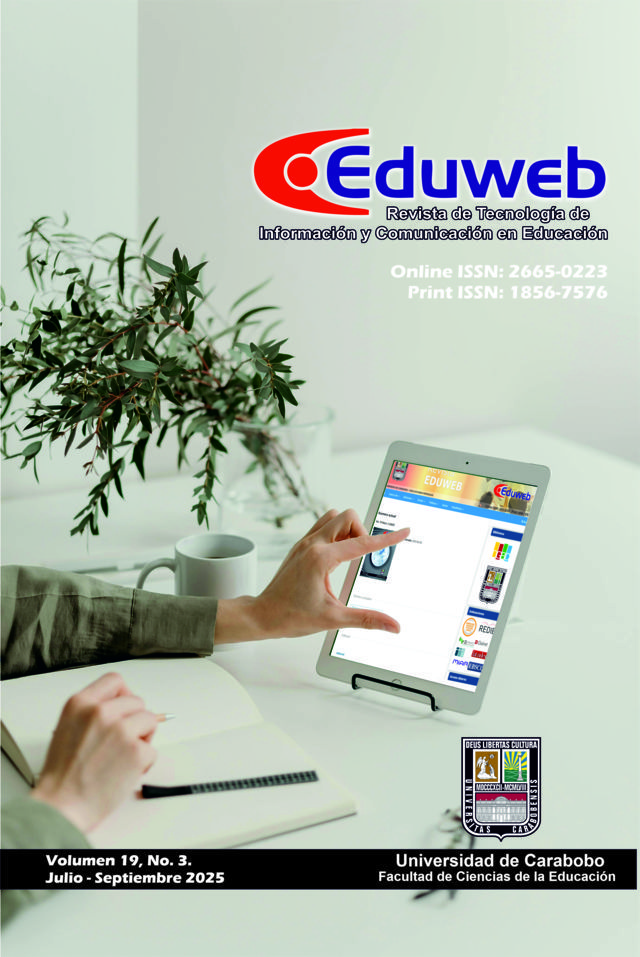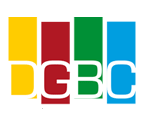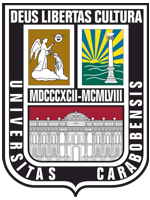Strategies for developing critical thinking through blended foreign language learning
DOI:
https://doi.org/10.46502/issn.1856-7576/2025.19.03.20Keywords:
blended learning, critical thinking, development methods, educational strategies, foreign languagesAbstract
The relevance of the study is determined by the need to implement modern educational technologies that develop students’ critical thinking when studying foreign languages. The aim of the research was to investigate the impact of the blended learning on the development of these skills. The research employed the following methods: questionnaire surveys, testing, comparative analysis, observation, and pedagogical experiment. Testing was carried out using the Watson-Glaser Critical Thinking Appraisal (WGCTA) and California Critical Thinking Disposition Inventory (CCTDI) methods, as well as statistical analysis of the results. The results showed that students in the experimental group improved their critical thinking scores by +7.8 points, while the increase was only +2.6 points in the control group. It was concluded that blended learning effectively contributes to the development of cognitive skills through a combination of traditional and digital methods. The academic novelty is the identified key components of blended learning that have the greatest impact on critical thinking, such as reflective tasks and multimedia projects. Further research prospects include the integration of mobile technologies and the analysis of their impact on other aspects of the educational process.
References
Akramova, G. R., & Akramova, S. R. (2021). Pedagogical and psychological conditions of preparing students for social relations on the basis of the development of critical thinking. Psychology and Education, 58(2), 4889–4902. https://doi.org/10.17762/pae.v58i2.2886
Alshaye, S. (2021). Digital storytelling for improving critical reading skills, critical thinking skills, and self-regulated learning skills. Cypriot Journal of Education Science, 16(4), 2049-2069. http://doi.org/10.18844/cjes.v16i4.6074
Arboleda García, K. A., & Naranjo Andrade, S. S. (2025). The impact of project-based learning on critical thinking and speaking abilities of young elementary EFL learners. Pacha: Revista de Estudios Contemporáneos del Sur Global, 6(17), e250415. http://doi.org/10.46652/pacha.v6i17.415
Banegas, D. L., Poole, P. M., & Corrales, K. A. (2020). Content and language integrated learning in Latin America 2008–2018: Ten years of research and practice. Studies in Second Language Learning and Teaching, 10(2), 283–305. https://doi.org/10.14746/ssllt.2020.10.2.4
Bernhardt, P. E., & Richmond, A. S. (2021). Promoting critical thinking through the use of student-generated case studies. In: I Management Association (ed.), Research anthology on developing critical thinking skills in students (pp. 971-980). Hershey: IGI Global. https://doi.org/10.4018/978-1-7998-3022-1.ch050
Cáceres, M., Nussbaum, M., & Ortiz, J. (2020). Integrating critical thinking into the classroom: A teacher’s perspective. Thinking Skills and Creativity, 37, 100674. https://doi.org/10.1016/j.tsc.2020.100674
Caro-Torres, M. C., Parra-Pérez, D. A., Averanga-Murillo, A. J., Corredor-Plazas, N. J., & Medina-Riveros, R. A. (2021). Blended-flipped instructional model: Personalization, flexibility and metacognition for the leveling of English in higher education. Folios, 53, 107–121. https://doi.org/10.17227/folios.53-10742
D'Argenio, L. (2022). Teaching critical thinking skills in the ESL classroom. Bridge. Retrieved from https://bridge.edu/tefl/blog/teaching-critical-thinking-skills-esl-classroom/
De la Puente Pacheco, M. A., Rios Mahecha, J. D., Campo, M., & Torres, J. (2024). Effectiveness of online and blended teaching methods in developing professional engineering cross-curricular skills: A study in the context of Latin America. Research in Comparative and International Education, 19(2), 197–223. https://doi.org/10.1177/17454999241231089
Giri, V., & Paily, M. U. (2020). Effect of scientific argumentation on the development of critical thinking. Science and Education, 29, 673–690. https://doi.org/10.1007/s11191-020-00120-y
Guzmán-Valenzuela, C., Chiappa, R., Rojas-Murphy Tagle, A., Ismail, N., & Pedraja-Rejas, L. (2023). Investigating critical thinking in higher education in Latin America: Acknowledging an epistemic disjuncture. Critical Studies in Teaching and Learning, 11(Special Issue), 624. DOI: 10.14426/cristal.v11iSI.624
Hasanah, H., & Malik, M. N. (2020). Blended learning in improving students’ critical thinking and communication skills at University. Cypriot Journal of Educational Sciences, 15(5), 1295–1306. http://doi.org/10.18844/cjes.v15i5.5168
Heard, J., Scoular, C., Duckworth, D., Ramalingam, D., & Teo, I. (2020). Critical thinking: Definition and structure. Australian Council for Educational Research. Retrieved from https://research.acer.edu.au/ar_misc/38/
Indah, R. N., Rakhmawati, D. E. N., & Al Umami, H. (2024). Does blended learning reshape students’ critical thinking skills? An evaluative study of Indonesian learners. World Journal of English Language, 14(5), 444. http://doi.org/10.5430/wjel.v14n5p444
Ivancu, O., Kriauciuniene, R., & Postic, S. (2023). Implementation of the critical thinking blended apprenticeship curricula and findings per discipline: Foreign language teaching. Education and Science, 13, 208. http://doi.org/10.3390/educsci13020208
Jaswal, P., & Behera, B. (2023). Blended matters: Nurturing critical thinking. E-Learning and Digital Media, 21(2), 106-124. http://doi.org/10.1177/20427530231156184
Konotop, O., Bykonia, O., Bondar, O., Shevchenko, Y., & Korobeinikova, T. (2023). Effectiveness of generative learning strategies in independent study of English using mobile technologies. Revista Eduweb, 17(3), 160-181. https://doi.org/10.46502/issn.1856-7576/2023.17.03.14
Lin, Z., Ryskulova, B., Cheng, X., Ren, S., & Apaeva, S. K. (2024). Critical thinking development of foreign language teachers through digital literacy training. Journal of Educational Technology Development and Exchange, 17(1), 222–236. https://doi.org/10.18785/jetde.1701.13
López-Novoa, I., Padilla-Guzmán, M., Juárez-De La Cruz, M., Gallarday-Morales, S., & Uribe Hernández, Y. C. (2020). University pedagogy based on generic competencies to develop critical thinking skills in students of the National University of San Martín. Propósitos y Representaciones, 8(3), 561. https://doi.org/10.20511/pyr2020.v8n3.561
Lu, D. (2021). Students' perceptions of a blended learning environment to promote critical thinking. Frontiers in Psychology, 12. https://doi.org/10.3389/fpsyg.2021.696845
Meirbekov, A., Maslova, I., & Gallyamova, Z. (2022). Digital education tools for critical thinking development. Thinking Skills and Creativity, 44, 101023. https://doi.org/10.1016/j.tsc.2022.101023
Mohebbi, Z., Haftador, A., Tehranineshat, B., & Keshtkaran, Z. (2023). A study of the effects of blended learning on university students' critical thinking: A systematic review. Journal of Education and Health Promotion, 12(1), 95. https://doi.org/10.4103/jehp.jehp_665_22
Mora-Aranda, R. S., & Velásquez-Cueva, H. I. (2022). B-learning as a teaching–learning strategy in the English language for secondary students: A systematic literature review. Polo del Conocimiento, 7(6), 168–182. http://doi.org/10.35622/j.rie.2022.02.006.en
Payan-Carreira, R., Sacau-Fontenla, A., Rebelo, H., Sebastião, L., & Pnevmatikos, D. (2022). Development and Validation of a Critical Thinking Assessment-Scale Short Form. Education Sciences, 12(12), 938. https://doi.org/10.3390/educsci12120938
Prat-Sala, M., & van Duuren, M. (2020). Critical thinking performance increases in psychology undergraduates measured using a workplace-recognized test. Teaching of Psychology, 49(2), 153-163. http://doi.org/10.1177/0098628320957981
Rico, H., De la Puente Pacheco, M. A., Pabon, A., & Portnoy, I. (2023). Evaluating the impact of simulation-based instruction on critical thinking in the Colombian Caribbean: An experimental study. Cogent Education, 10(1), 2236450. https://doi.org/10.1080/2331186X.2023.2236450
Roberto-Flórez, E. E., Arias-Rodríguez, G. L., & Herreño-Contreras, Y. A. (2022). Constructing critical thinking scenarios in online legal English classes. GIST – Education and Learning Research Journal, 24, 119–140. https://doi.org/10.26817/16925777.1339
Rombout, F., Schuitema, J. A., & Volman, M. L. L. (2022). Teaching strategies for value-loaded critical thinking in philosophy classroom dialogues. Thinking Skills and Creativity, 43, 100991. https://doi.org/10.1016/j.tsc.2021.100991
Salas-Pilco, S. Z., Yang, Y., & Zhang, Z. (2022). Student engagement in online learning in Latin American higher education during the COVID-19 pandemic: A systematic review. British Journal of Educational Technology, 53(3), 593–619. https://doi.org/10.1111/bjet.13190
Tamayo Cano, L. H., Riascos Gómez, A. F., & Pineda Hoyos, J. E. (2023). Needs analysis to design an English blended learning program: Teachers’ and administrators’ voices. Profile: Issues in Teachers’ Professional Development, 25(1), 193–210. https://doi.org/10.15446/profile.v25n1.101316
Teng, X., & Zeng, Y. (2022). The effects of blended learning on foreign language learners’ oral English competence. Theory and Practice in Language Studies, 12(2), 281–291. https://doi.org/10.17507/tpls.1202.09
Ubilla-Rosales, L., Gómez-Álvarez, L., Sáez-Carrillo, K., & Etchegaray-Pezo, P. (2020). Collaborative writing of argumentative essays in an EFL blended course: Chilean pre-service teachers’ perceptions and self-assessment. Íkala, Revista de Lenguaje y Cultura, 25(2), 333–347. https://doi.org/10.17533/udea.ikala.v25n02a10
Yang, Y., Dibyamandala, J., & Mangkhang, C. (2022). The effects of mobile blended active language learning on the English critical reading skills of high school students in Thailand. Journal of Curriculum and Teaching, 11(5), 1. http://doi.org/10.5430/jct.v11n5p1
Yukhymenko, V., Borysova, S., Bazyl, O., Hubal, H., & Barkar, U. (2024). Station rotation model of blended learning in higher education: Achieving a balance between online and in-person instruction. Conhecimento & Diversidade, 16(41), 182-202. http://doi.org/10.18316/rcd.v16i41.11434
Published
How to Cite
Issue
Section
License
Copyright (c) 2025 Ümit Yildiz, Iryna Hotsynets, Myroslava Sosiak, Olena Diachenko, Larysa Volovyk

This work is licensed under a Creative Commons Attribution 4.0 International License.














